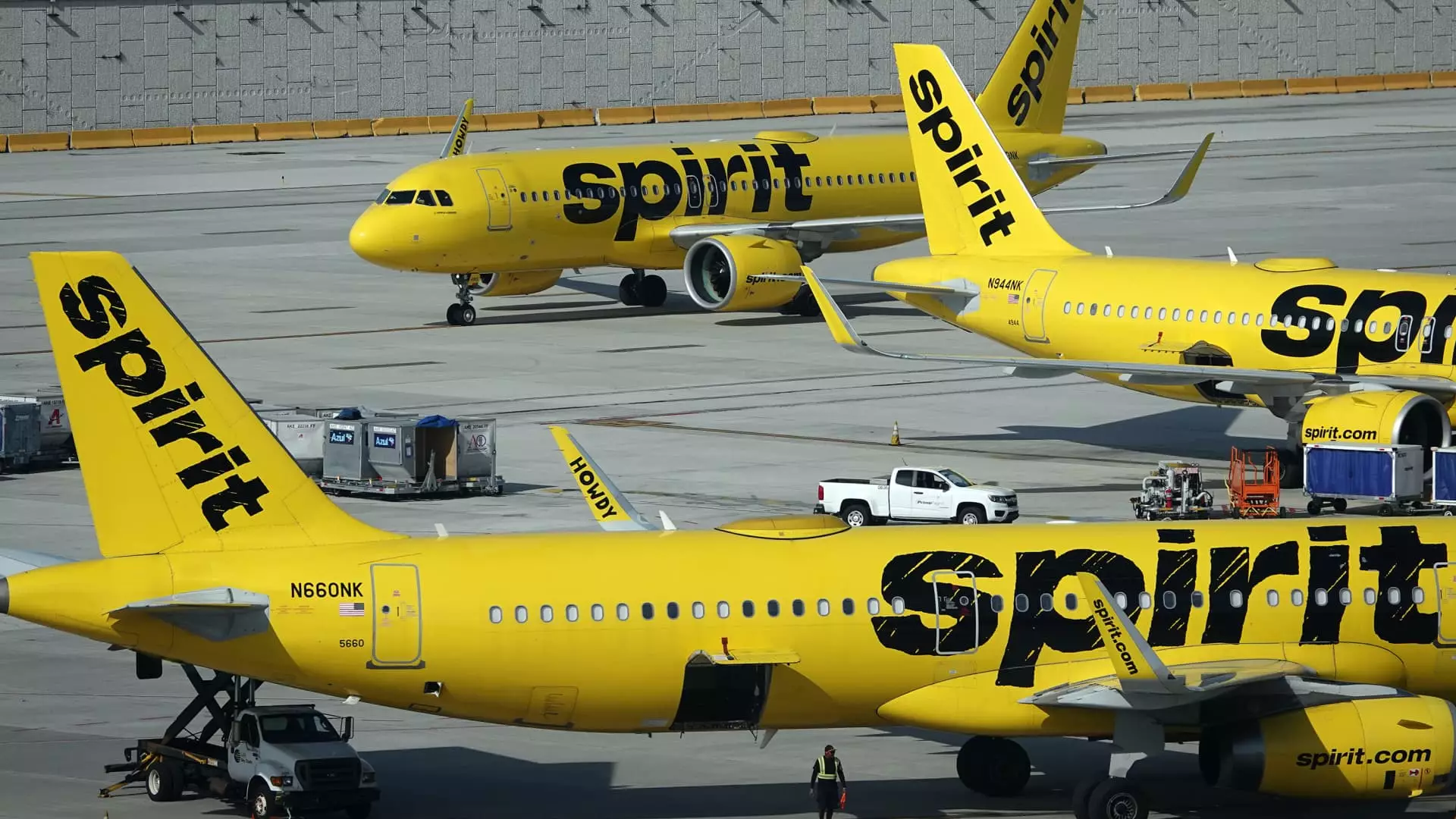Spirit Airlines, a budget airline known for its ultra-low-cost model, has recently announced a strategic plan aimed at countering its ongoing financial struggles. This plan has led to a surge in its share price, climbing by 16% to $2.79 per share. Such a shift in investor sentiment comes after the airline revealed its decision to cut jobs and divest from some of its older aircraft, marking a crucial turning point for a company that has faced significant challenges in the post-pandemic landscape.
In its latest securities filing, Spirit Airlines disclosed its intention to sell 23 older Airbus aircraft, a move the company anticipates will generate around $519 million. In parallel, Spirit aims to slash costs by approximately $80 million, largely through workforce reductions. While the airline has yet to specify the exact number of jobs that will be affected, it has already started implementing furloughs, impacting about 200 pilots as of September. This dual approach of generating capital through asset sales while simultaneously cutting operational costs is indicative of a broader trend among budget airlines striving to maintain profitability amid shifting market dynamics.
The path to recovery for Spirit Airlines is complicated by several factors. The airline has encountered a shifting travel demand landscape and operational disruptions, particularly due to the grounding of a significant number of its Pratt & Whitney-powered aircraft. Additionally, a recent legal setback, which blocked Spirit’s proposed acquisition by JetBlue Airways, has led to a staggering decline of over 80% in its share price throughout the year. Although the latest developments reflect a momentary uplift, the long-term sustainability of this recovery remains uncertain.
Despite the current turbulence, Spirit Airlines has provided an outlook for the third quarter, forecasting a negative operating margin of 24.5%, an improvement over its earlier estimates. Notably, the airline also indicated a reduction in its capacity projections for 2025 by the mid-teens percentage-wise compared to the current year. While cutbacks in capacity could lessen operational losses, they might also restrict the airline’s market share in an increasingly competitive environment.
The speculation surrounding potential merger discussions between Spirit and Frontier Airlines has also contributed to the recent uptick in share prices. This new wave of interest in consolidation comes after a previously stalled merger agreement fell apart due to JetBlue’s aggressive bidding, which shifted the competitive landscape. The discussions, if fruitful, could pave the way for a stronger operational framework and improved financial health for both budget carriers.
Spirit Airlines stands at a crossroads, struggling to regain footing in a rapidly evolving aviation industry. While the new cost-cutting and asset liquidation strategies may provide short-term relief, the airline will need to navigate ongoing operational challenges and competitive pressures to secure a sustainable future. Investors and analysts will be keeping a close eye on Spirit’s next moves as it attempts to align itself with the rapidly changing demands of the post-pandemic travel market.

